East Meadow Herald Cover Story: Racing through the Island’s past
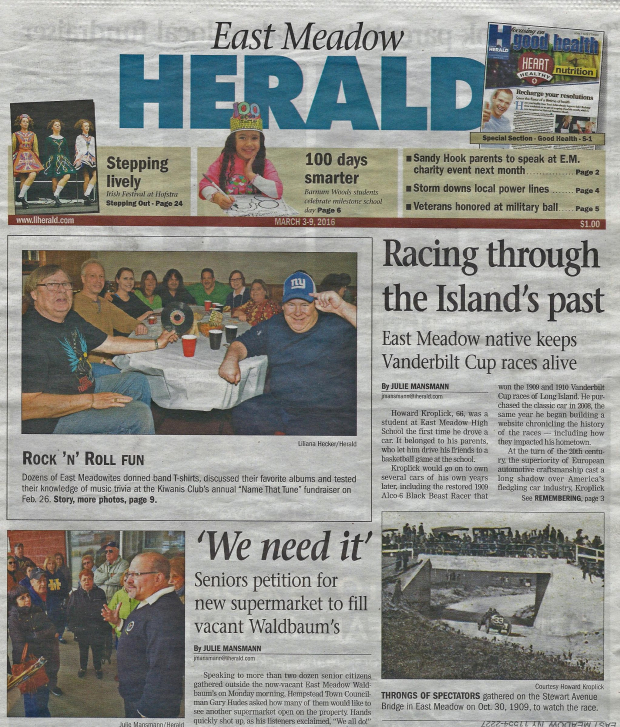
Reporter Julie Mansmann interviewed me last week on the Vanderbilt Cup Races and the Long Island Motor Parkway for the East Meadow Herald. This is her cover article published in this week's issue.
Enjoy,
Howard Kroplick
Racing through the Island’s past
East Meadow native keeps Vanderbilt Cup races alive
By Julie Mansmann
East Meadow Herald
March 3-9, 2016
Howard Kroplick, 66, was a student at East Meadow High School the first time he drove a car. It belonged to his parents, who let him drive his friends to a basketball game at the school.
Kroplick would go on to own several cars of his own years later, including the restored 1909 Alco-6 Black Beast Racer that won the 1909 and 1910 Vanderbilt Cup races of Long Island. He purchased the classic car in 2008, the same year he began building a website chronicling the history of the races — including how they impacted his hometown.
At the turn of the 20th century, the superiority of European automotive craftsmanship cast a long shadow over America’s fledgling car industry, Kroplick explained. To encourage American auto manufacturers to challenge European quality, he said, 26-year old William K. Vanderbilt Jr. — heir to a railroad fortune and a pioneer racecar driver — organized America’s first international road race.
The six Vanderbilt Cup races, which were held on Long Island from 1904 to 1910, were the greatest sporting events of their day, Kroplick said. When he learned several years ago that portions of Glen Cove Road, near his new home in East Hills, were part of the course for the 1905 and 1906 races, he paid a visit to the Suffolk County Vanderbilt Museum.
“I figured that I’d only be there for an hour, but then I found out it was a really big thing that had kind of been lost in Long Island’s history,” he said. “That one hour became several hundred hours of research.”
In March 2008, his daughter, Dana, helped him launch vanderbiltcupraces.com so he could share what he was learning about the races with fellow automotive enthusiasts. The focus of his research and the content on the website soon expanded, however, as he discovered the relationship between the races and the development of the Long Island Motor Parkway.
The races drew as many as 250,000 people to the course, which stretched from an area near what is now Jericho into Queens. But after a spectator was struck by a car during the 1906 event and died, Vanderbilt and the race sponsors decided that the huge crowds and risks to the onlookers precluded holding the race on public roads. Two days after the race, Vanderbilt and his associates developed the concept of a privately owned speedway — the first highway built exclusively for the automobile.
Construction of the first section of the Long Island Motor Parkway began in June 1908. Nine miles of the road were used for the course of the 1908 Vanderbilt Cup race, and five miles of it were used in the 1909 and 1910 races. By 1928, the parkway connected Fresh Meadows, Queens, to Lake Ronkonkoma in Suffolk County, according to Kroplick. It closed in 1938, he said, because it was not profitable, and there were new, free public parkways.
Kroplick co-authored a book called “The Long Island Motor Parkway” with Al Velocci, which was published in 2008, a few months after his first book, “Vanderbilt Cup Races of Long Island,” was released. Two years after he was appointed the Town of North Hempstead historian, Kroplick also wrote a book about the municipality.
The races’, and the parkway’s, connection to East Meadow was one of the things that piqued his interest in creating his Webby-award-winning website and writing three books. Of the 150,000 images of the races that he has collected, many depict well-known local areas. The cover of “Vanderbilt Cup Races of Long Island” features a photo of a section of the Long Island Motor Parkway — surrounded by nothing but flat land — in East Meadow in 1908.
Kroplick explained that participants in the 1908 race zipped over and under bridges on Merrick, Carman and Stewart avenues, along the stretch of the parkway that is now Salisbury Park Drive and past what is now Eisenhower Park. A pedestrian bike path north of the park, called the Motor Parkway Trail, features several historic markers, thanks to the advocacy of the Long Island Motor Parkway Preservation Society. Kroplick is its president.
“When I started the Long Island Motor Parkway Preservation Society, eight people were interested in joining the organization,” he recalled. “Now, we have 300 members. The history of it now is something people are starting to recognize more.”
Kroplick is passionate about that history, because, he said, the races and the parkway helped expand the population and the development of Long Island, and spurred American automotive innovations. On a personal level, he added, it has been fascinating to meet relatives of former drivers and people involved in the making of the Vanderbilt Cup races.
“It’s a matter of going deep into history and finding many different, interesting stories about people,” he said.
East Meadow Herald March 3-9, 2016
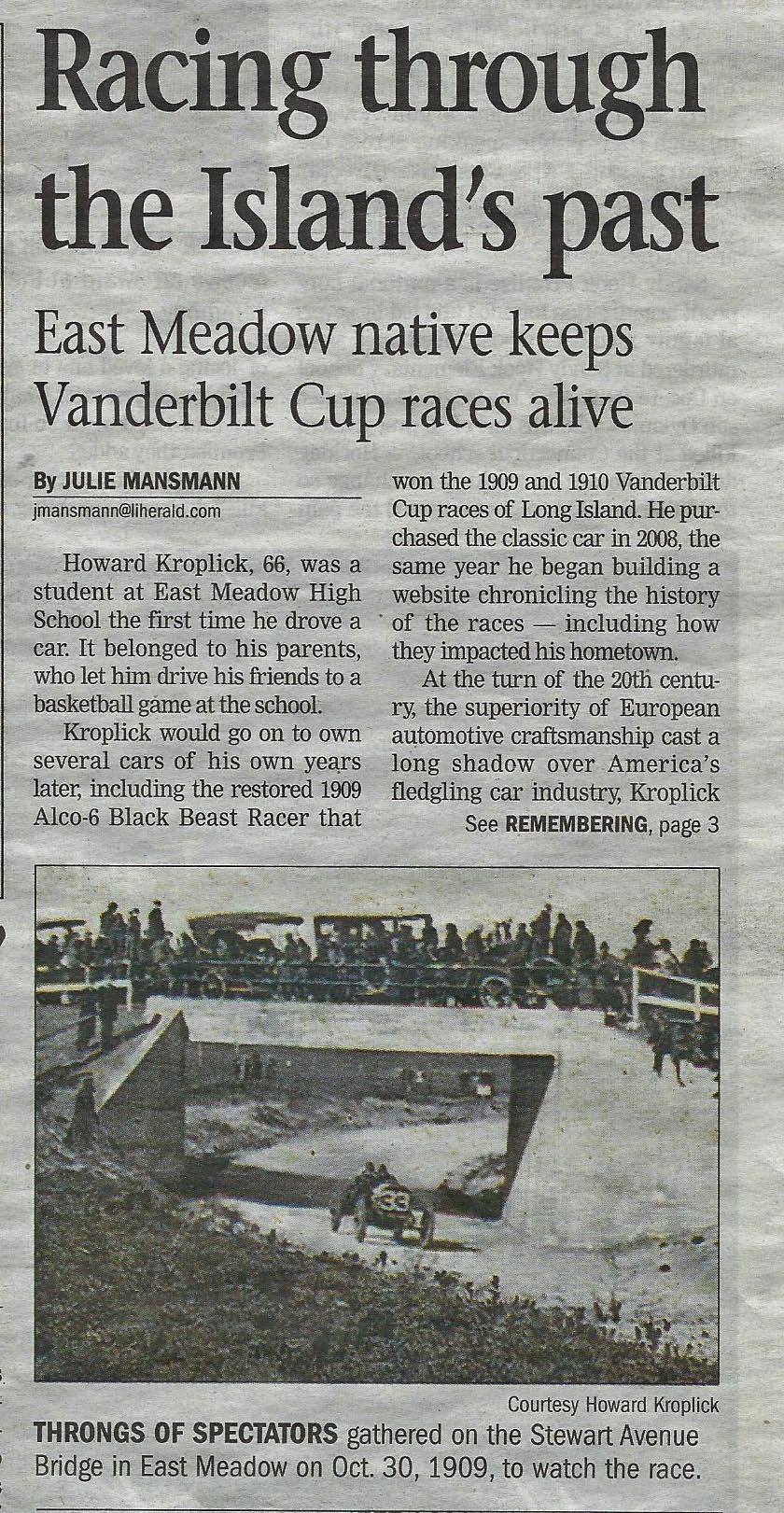
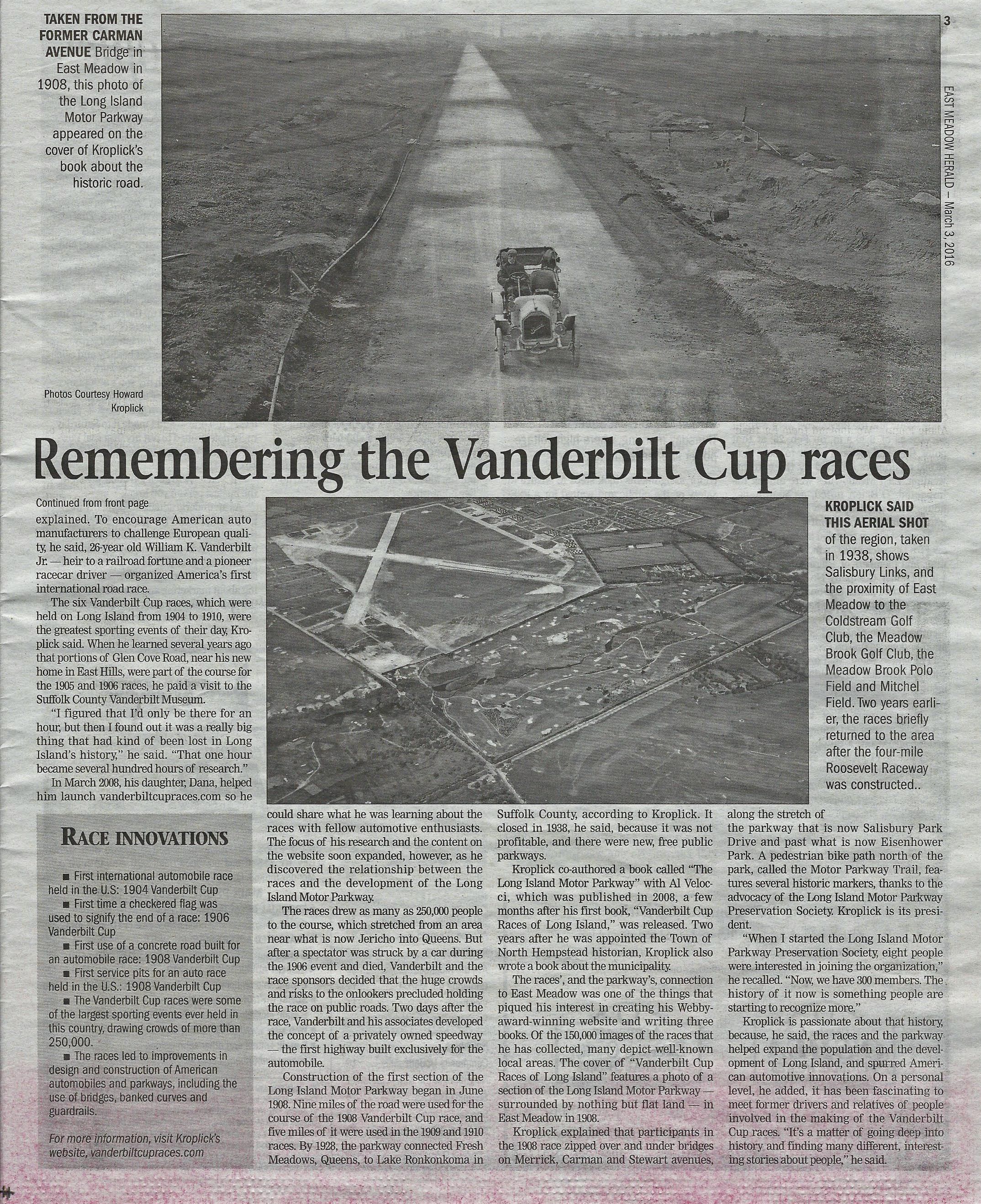
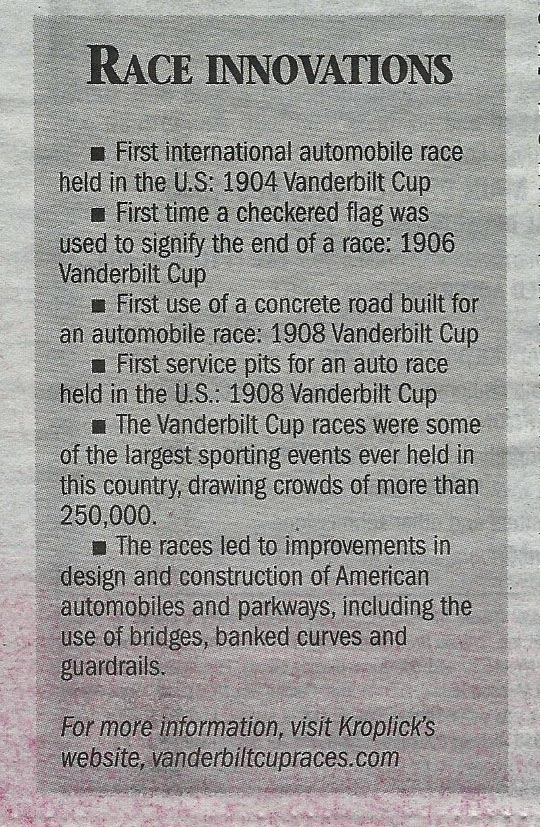
Photos
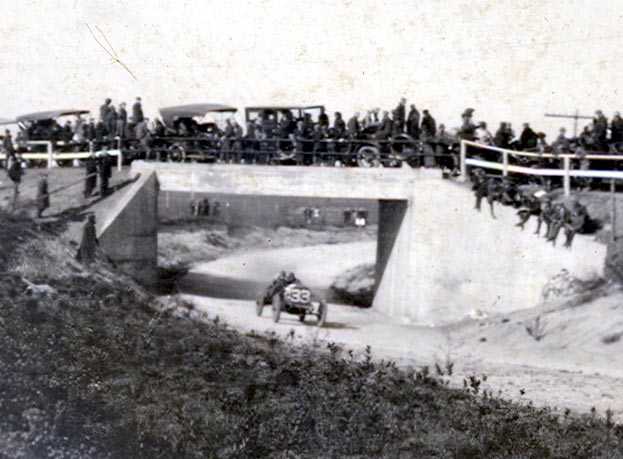
Throngs of spectators gathered on the Stewart Avenue Bridge in East Meadow on Oct. 30, 1909, to watch the race.
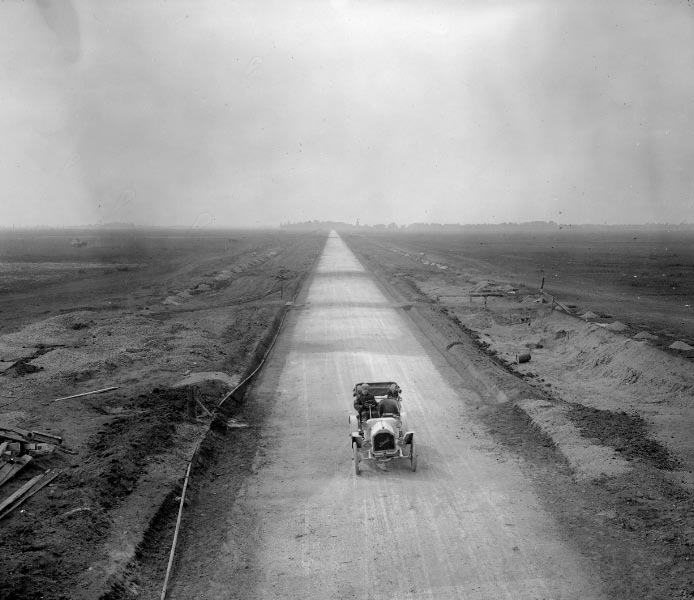
Taken from the former Carman Avenue Bridge in East Meadow in 1908, this photo of the Long Island Motor Parkway appeared on the cover of Kroplick’s book about the historic road. Courtesy of the Garden City Archives.
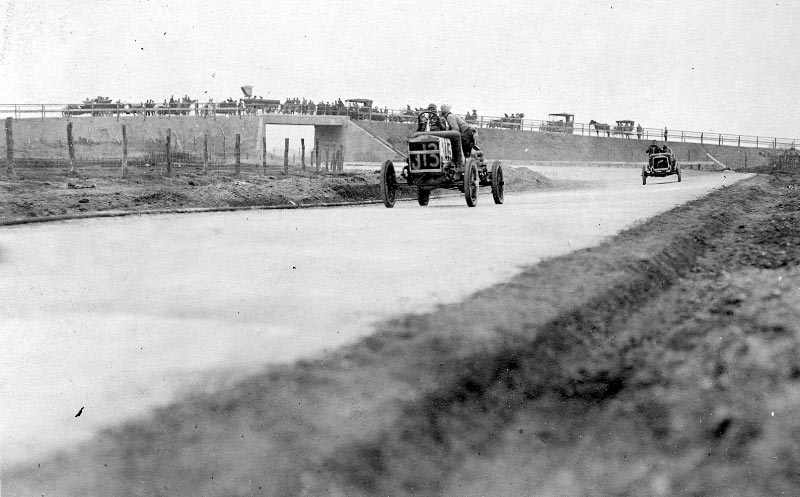
#33 Columbia during the 1909 Wheatley Hills Sweepstakes at the Stewart Avenue Bridge in East Meadow on October 30, 1909
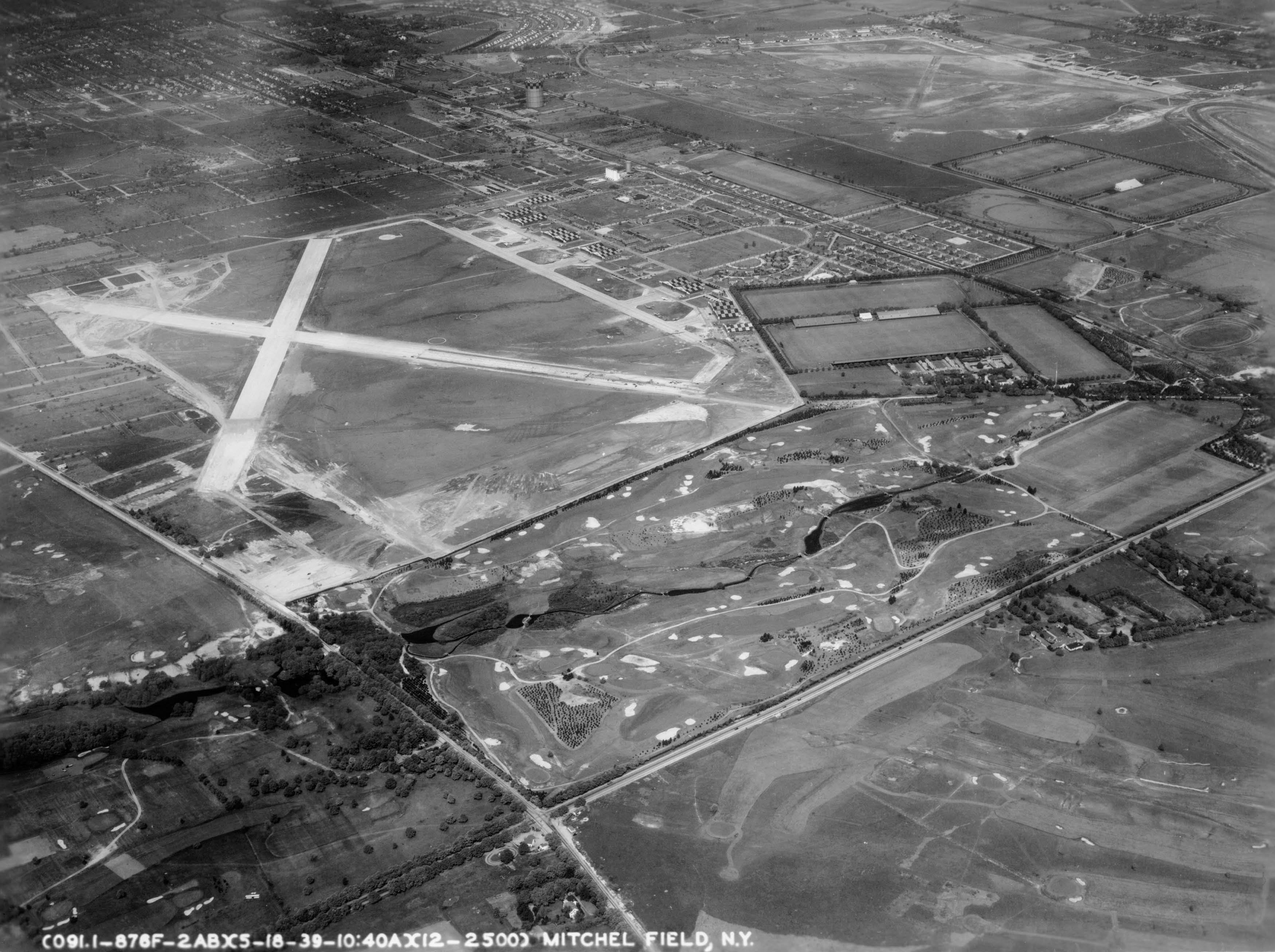
1938 Aerial Showing the Salisbury Links (right corner). Shows relationship of East Meadow to the Coldstream Golf Club, Meadow Brook Golf Club and Meadow Brook Polo Field and Mitchel Field and Roosevelt Field. Note the concrete runway of Mitchel Field under construction reflecting the approaching World War. The intersection of Merrick Avenue and Hempstead Turnpike in East Meadow can be seen in the lower middle of the aerial. There was no traffic light at this intersection until the 1950s.

Comments
Great story .l like reading about Long Island ,and racing history .you do a nice job
Howard you do a great job with your web site. Your love of history and tremendous amount of work that you put into what you do is greatly appreciated. I look forward to every new motor parkway post. Hopefully the membership continues to grow. Long Island has tremendous history, the motor parkway being one fantastic example.
Got my copy Howard. Nice article!